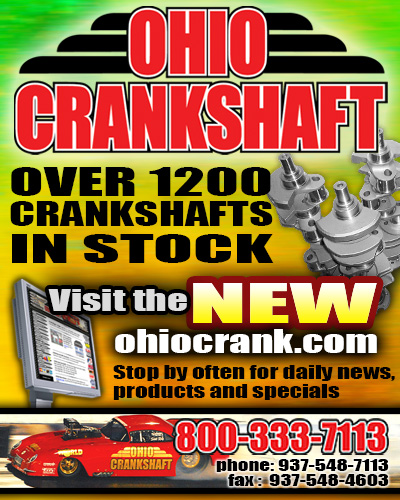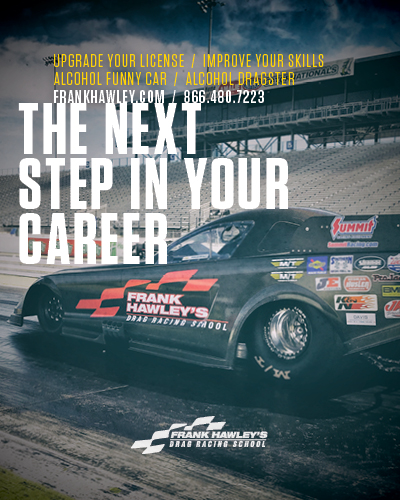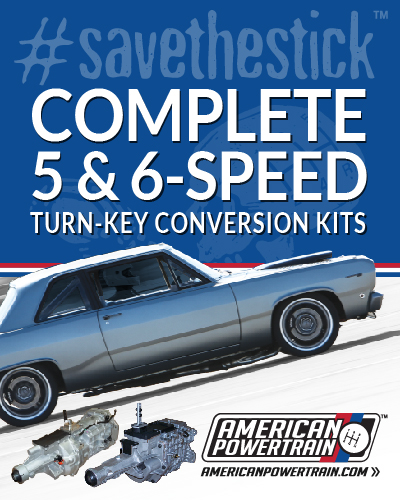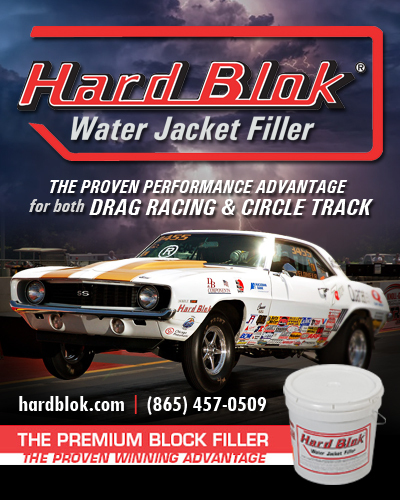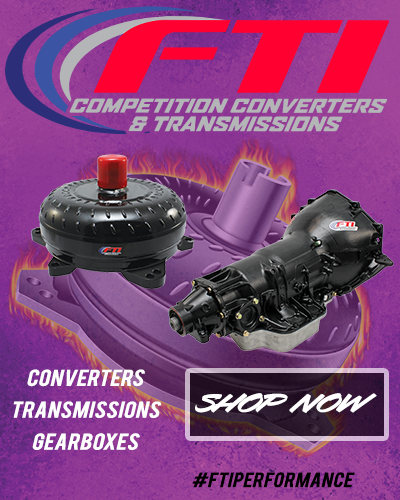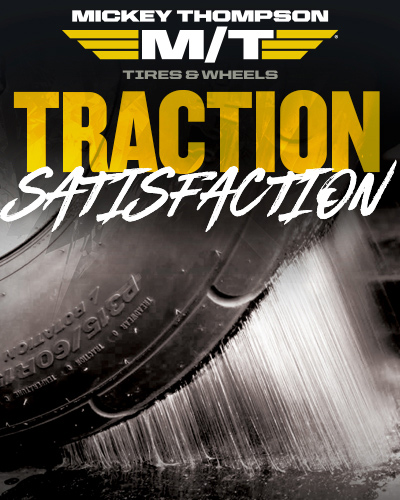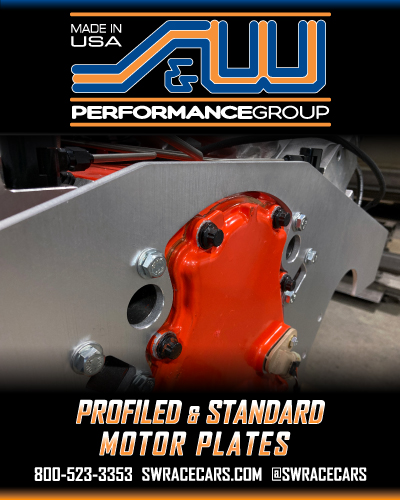ENCORE: THE DAY THE SPORTSMAN RACERS FOUGHT BACK
Originally published September 2003
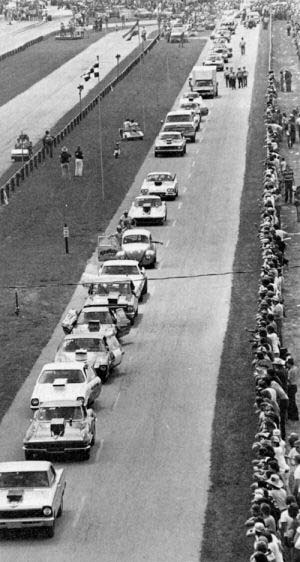 There's nothing more prestigious than winning Top Fuel at the NHRA U.S. Nationals, and that's exactly what inspired a group of sportsman racers to use the first round of eliminations as a protest platform. No sportsman division had dared to stand up to the seemingly invincible sanctioning body, not to mention during their flagship national event. There's always a first time for everything, however, and in 1981 a group of disgruntled sportsman racers took the NHRA to task in front of their paying customers.
There's nothing more prestigious than winning Top Fuel at the NHRA U.S. Nationals, and that's exactly what inspired a group of sportsman racers to use the first round of eliminations as a protest platform. No sportsman division had dared to stand up to the seemingly invincible sanctioning body, not to mention during their flagship national event. There's always a first time for everything, however, and in 1981 a group of disgruntled sportsman racers took the NHRA to task in front of their paying customers.
This makeshift group of sportsman racers had been rumor fodder in the pits for a few months prior to the event, yet when they confronted the sanctioning body the issue was always sidestepped. On Labor Day weekend in 1981 they took the unprecedented step of airing their concerns before one of the largest crowds of the year. After all, they had nothing to lose.
These racers, many of whom had raced in one particular category for more than a decade, had no say-so as their beloved class was sentenced to the proverbial chopping block. The remnants of their high-energy eliminator known simply as Modified were to be spread out among the classes that ranked above and below it in the eliminator pecking order. To diehard gearheads, the move made no sense. Those on the outside could see the direction of sportsman drag racing changing before their eyes.
The Modified racers knew their only chance to get the attention of the decision makers of the NHRA was to hold a peaceful protest to show what they had to offer. The race fans would be their jury.
That's exactly the path of resistance that over 100 competitors within that class chose as the nitro dragsters thundered in the background. They lined up, one by one. There were Chevy IIs, Corvette Stingrays, a Ford Fairmont or two, a few Mavericks, a handful of Volkswagens, and more than two dozen Camaros. One by one, they rolled down the return road, Gassers, Modified Productions, Modified Compacts and Super Modifieds, in front of the packed grandstands. Many of the spectators had no clue what was going on, but they had to know that something out of the ordinary was taking place.
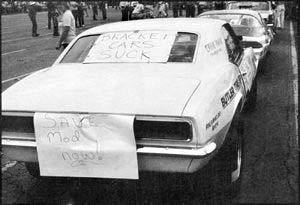 “Most of the tracks had switched over to bracket racing. Those guys at the local tracks were itching to run national events. They were always quick to point out ‘beat me and not my wallet.' The bottom line is that half of those guys couldn't shift a stick and they drove like little old ladies. That slowed them down. They went to automatics. We just didn't want to go to that.” – Bob Gillig
“Most of the tracks had switched over to bracket racing. Those guys at the local tracks were itching to run national events. They were always quick to point out ‘beat me and not my wallet.' The bottom line is that half of those guys couldn't shift a stick and they drove like little old ladies. That slowed them down. They went to automatics. We just didn't want to go to that.” – Bob Gillig
While the NHRA seems to enjoy reliving many of the memories associated with their largest and most prestigious event, this is the one U.S. Nationals moment in history that you'll never hear them admit to, and with good reason. It was the first time that the sportsman racers organized to speak out. In those days, if the NHRA didn't report it in their house publication, the general consensus among those in the Glendora, Ca.-based office was that it didn't happen. On this day, the sportsman racers knew that many members of the independent media were on hand, and they knew that this meant that their voices would be heard.
Not surprisingly, the moment wasn't even chronicled in the pages of National DRAGSTER after the event. Instead, it appeared in Super Stock and Drag Illustrated and other drag racing magazines of the day.
What inspired the protest? That depends on whom you ask. Some of the racers will tell you that it was the wishy-washy approach that the NHRA took to disbanding the class. Then there was a group that saw their existence being penciled away at the expense of bringing bracket racers to the national events, an unheard of trend in that day. At one time, the NHRA national events catered to a class-racing contingent that often looked down on the grass-roots racers. This was a changing of the guard and the racers wanted it to be handled via some sort of democratic process, but that never happened.
Some wanted to race in the same manner as they had for years. They wanted all-out racing with doorslammers as competition in Modified had afforded them. They didn't want altereds and dragsters in their fraternity and they certainly didn't want to have to get on the brakes as the NHRA had experimented with in the mid-Seventies.
One of the racers present on that day was Mike Keener, who, along with sportsman legend Paul Mercure, teamed up to form the respected Checkmate team. Both Keener and Mercure realized that their classic Modified Production Chevrolets might become obsolete overnight, that the day was coming that they'd have to replace the old high-winding hot rods with more mechanized late-model machinery. The next year Keener and Mercure went Pro Stock racing, only to return years later to the simpler time when they raced class.
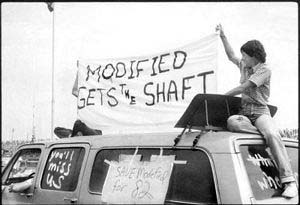 It didn't matter how many of this Modified supporting cast sported “Save Modified” buttons or shoe polished messages on the windows of their tow vehicles and racecars, the decision was made. They weren't going down without a fight.
It didn't matter how many of this Modified supporting cast sported “Save Modified” buttons or shoe polished messages on the windows of their tow vehicles and racecars, the decision was made. They weren't going down without a fight.
It didn't matter how many of Modified’s supporting cast sported “Save Modified” buttons or shoe polished messages on the windows of their tow vehicles and racecars, the decision was made. They weren't going down without a fight, however.
“The word just filtered down to us from the NHRA,” explained Keener. “At first we dismissed it as rumor, but as the season continued, we began to hear it more and more. We finally realized that it had to be true. That's when the ‘Save Modified' buttons were distributed to everyone. It was a pretty disruptive time and a lot of guys were upset.”
Keener was one of 125 Modified eliminator qualifiers who paraded down the return road on that day. He admitted that the effort served little purpose in curbing the NHRA's determination to cancel the class. “It was just a big show of support for all of the racers on behalf of their class and the fans of Modified who were very dissatisfied with the NHRA's decision to end the class. We didn't want to go into Competition Eliminator.
“I think it got their attention, but it's just like any other group or league, once they make their decision, they stand by it and rarely ever change. I guess the way they did the Pro Stock Truck class is a good example of that.”
Bob Gillig, now an IHRA Pro Stock crewchief, admitted the protest wasn't initially planned as peaceful by any stretch of the imagination. Jerry Coley, a Modified Production racer in the class, even formed a group called the United Sportsman Racers Association, to bring litigation against the NHRA. Coley's deal fell through when little, if any, financial support was donated to the cause.
“The original idea was to drive the cars down the track in protest,” recalled Gillig.
“The NHRA came to us and let us know in no uncertain terms if we drove onto the track and stopped the race that we'd all be escorted out of there. They gave us the option of the return road.”
That day in Indy gave some of the racers a sense of pride to know that they had spoken their piece. “It was just pointing out their reason was a crock of bull and we knew better,” said Gillig. “They didn't hear it and the way they looked at it, they were God and what we had to say didn't matter. If you wanted to race, you had to play by their rules.”
 They lined up, one by one. There were Chevy II's, Stingray Corvettes, a Ford Fairmont or two, a few Mavericks, a handful of Volkswagens and more than a two-dozen Camaros. One by one, they rolled down the return road, Gassers, Modified Productions, Modified Compacts and Super Modifieds, in front of the packed grandstands. Many of the spectators had no clue what was going on, but they had to know that something out of the ordinary was taking place.
They lined up, one by one. There were Chevy II's, Stingray Corvettes, a Ford Fairmont or two, a few Mavericks, a handful of Volkswagens and more than a two-dozen Camaros. One by one, they rolled down the return road, Gassers, Modified Productions, Modified Compacts and Super Modifieds, in front of the packed grandstands. Many of the spectators had no clue what was going on, but they had to know that something out of the ordinary was taking place.
“You would like to think that you are making a difference by speaking your mind,” said Mercure. “Now I know otherwise. Back then we thought we were doing the right thing. The NHRA never said a thing to us, but gave us some dirty looks. I really think the same thing is getting ready to happen to Competition Eliminator.”
The NHRA's reasoning for the disbanding of Modified was the poor local following for these style cars. But at the national events there was no problem filling the fields. As many as 148 cars showed up for the 1981 U.S. Nationals trying to gain a berth in the 48-car field. Traditionally, Division 7 (home of the NHRA at the time) had a poor contingent of Modified cars on a regular basis.
Mike Edwards, a current NHRA Pro Stock racer, will forever be remembered as the last driver to win a Modified Eliminator championship. Edwards never got to wear his rightfully earned #1 ranking on the window the next year. He took part in the protest.
“I remember that day very well,” said Edwards. “We were just trying to stand up for our class. We loved the class and it was special for each one of us. That's where my roots are. We didn't prevail, but it couldn't take away the love I had for it. I loved the old wheelstanding Corvettes and all the cars in the class like that.
“I hated to see it die. When I was growing up I learned to race in that class. Some people aspired to run Pro Stock, but for me it was Modified Eliminator. I think Modified got more notoriety than the classes that it was broken up and put into. The real racing fans understood Modified.”
The NHRA's plan was to take the quicker Modified Production classes and the Gas Coupe divisions, along with Street Roadsters, and place them in Competition Eliminator with the open-bodied cars. The slower Modified Productions (F through H), Gas Coupes (J through L) and Modified Compacts all were adopted into Super Stock. In Comp, they ran all-out to the finish line. In Super Stock, they had to contend with a dial-in. Modified had been a class that was handicapped on its class records. The big gripe is that many of these drivers wanted to compete only against full-bodied cars with no restrictions. The deletion of Modified removed that option. Super Modified, once the darling of the Seventies drag magazines, could go either way. Edwards added, “I think the whole deal fell on deaf ears. At the time, we felt as if we were doing the right thing. It was unfortunate that we had to lose our class.”
The one signal that the NHRA sent to the sportsman racers of that era was that their style of racing had become expendable.
Mercure said “you became aware that they were calling the shots and that they were going to do what they wanted to do. They were going to structure the sanctioning body the way they wanted to and you could either play by their rules or not play at all. Many of us adapted and there were others that just quit. I don't think it was ever the same for the high-rpm doorslammer cars. It kicked the foundations out from under a lot of racers.”
“It got the NHRA's attention, but their mind was mind up. They didn't appreciate our show but they understood where we were coming from. The decision was made and that was that. No matter what we did it wasn't going to change.”
Keener had raced Modified for almost 14 years and there's not a day that he doesn't think about his first true racing love. “I wish it was still here. It was an exciting eliminator. With today's money and the cost of a high-rpm motor about 75,000 – 80K, it's just not feasible. But that doesn't mean we can't miss it. We miss it a lot.”
Edwards added, “It's just another example of how the sport grows and keeps going on. We thought it was the right thing to do and we did it.”
Those such as Gillig admitted that the local Modified participation had dwindled as the NHRA had alleged. Even he could see that there were fewer places to run Modified at the end than there had been when he started.
“Most of the tracks had switched over to bracket racing,” Gillig said. “Those guys at the local tracks were itching to run national events. They were always quick to say ‘beat me and not my wallet.' The bottom line is that half of those guys couldn't shift a stick and they drove like little old ladies. That slowed them down. They went to automatics. We just didn't want to go to that.”
Dave Wallace was covering the event as a freelancer for Hot Rod magazine and had a front-row seat for the incident, as illustrated by most of these photos from that eventful Labor Day.
"They felt there was a chance to change some minds because essentially the whole drag racing industry congregated at Indy. This would be their only shot. There was a lot of confusion because no announcement was made as to what was going on. The fans hanging on the fence might've known. I think the thing was largely ignored and few knew what was going on. Unless you were a hardcore fan, you didn't have a clue. I think it was a rare uprising against the establishment. The NHRA had never been challenged in a public forum like that.
"They (Modified racers) were going around cars that had just finished racing,
coming back down the return road. The other racers were clapping for the Modified teams. I think it was real ballsy, but the downside of it was that whatever slim chance might've existed for saving the eliminator went away that day. It didn¹t really generate any new support, but it may have worked as a negative. We now know what happened the next year. A lot of media guys jumped quick to cover it."
In the end, it was the late Steve Collison, a noted motorsports journalist and editor of the defunct Super Stock and Drag Illustrated magazine, who wrote the perfect obit for the class.
During his coverage of the final Modified Eliminator event at Indy, Collison penned, "Modified at Indy took on an entirely new meaning because, in light of NHRA's decision to break up the eliminator between Comp and Super Stock for 1982, there would never, EVER be another Modified race like this one. And to anyone who appreciates the personal efforts and technological achievements that go into these gear-stompin', wheel-hoppin' quarter-mile race cars, the loss of their identity is truly a sad state of affairs."
How prophetic Collison's words turned out to be; over a quarter of a century later, they are still proving to be true.



